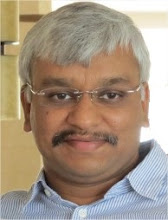The marketing concept aligns itself towards satisfaction of needs and influencing of wants of customers. If we look in depth the concept of marketing, we would realize that marketing isn’t just a concept; instead it’s a practice, which revolves around customer. In other words its customer centric approach, where whole gamut of activities revolve around customer.
One can argue that it depends upon the approach that we take towards marketing, i.e. whether it’s a “Product Oriented”, “Sales Oriented” or “Customer / Market Oriented”. However, in first tow approaches the emphasis is on “selling” and not “addressing” the customer wants. Those approaches might have succeed in a “closed” economy, where consumers do not have many options and have to live with the available products, pre 1990 India and old USSR are the examples of those approaches. Under both, consumer did not have a choice and it was a supplier’s market, where the demand exceeded supply.
However, in current market driven economy, the focus has shifted from supplier to buyer. If that is the case, then the marketing focus should also shift towards customer, because ultimately market is nothing but the demand of customers (assuming the suppliers are already there). And we need to align our efforts in such a way that we are able to address the customer wants fast, efficiently and effectively.
Therefore, the marketing is,
a) Orientation towards customer / Customer focus
b) Adaptation, instead of “Selling”
c) Seek information, technology, needs, competition (global / local), markets, products
d) Coordination of activities, departments units
e) Continuous feedback via probing, surveys, research, analysis etc.
f) Seeking new opportunities
g) Seek, deploy and hone best practices
h) Focused market servicing (segmentation based on demography, income level etc.)
i) Brand building, with respect to quality, customer care, social obligation, value add etc,
j) Understanding of customer needs, wants and demands.
If we look at the above stated points we’ll find that each and every single point, directly or indirectly touches the customer. Today the market is driven through customer, and if we do not pay attention to customer needs, it is obvious the product that we develop may be a technological marvel, but would fail in the market. And it is not limited to a product alone, it holds true for service, people, good or any kind of “thing” which requires transaction.
As the ultimate objective for any business is to make some profit, so that its economically viable to be at that place. However, before, making a decision about what would be our product (assuming that he / she decides to develop one product), would that not be appropriate to find out the market for the same? But, who drives the market? It is obvious that market is driven by customers. The reason being if they are not there, how would the transaction happen? Can we imagine a scenario where we have a market without a customer?
Well, if the customer is so important to a business, then it is obvious that we can’t ignore him. This is what Donald E. Peterson had remarked. If we have not addressed the needs of our customers or did not think about customers needs in our production process, then we will end up with a product, which will have no market value. For example, customer market that Ford is catering to is service class with limited means of income. Their primary objective of buying a vehicle could be,
1) Cheap transportation
2) Safety
3) Reliability
4) Low Maintenance Cost, and
5) Relative comfort
So, if a customer is looking for these attributes, then there is no point in creating a car driven around by “James Bond”. On the other hand if we address these needs and “add” some features, which are of some benefit to the customer (after probing, research, past experience, analysis etc.) then it would also cater to the “delight” need of customers.
The above explanation captures only first interaction and need, what about servicing, trouble shooting, relationship building? The customer should get a feeling that whenever he / she needs any help with regard to purchased vehicle; Ford is there for me to help. If Ford is able build that comfort and confidence in its customers then it is able to get a little more closer to the customer and it’s end objective of higher markets share, sales and profit.
The cycle would be complete when we seek, adapt, deploy, hone and control our activities / strategies in such a way that every cycle brings us closer to the customer needs and hence market.
Friday, May 9, 2008
Subscribe to:
Post Comments (Atom)

No comments:
Post a Comment